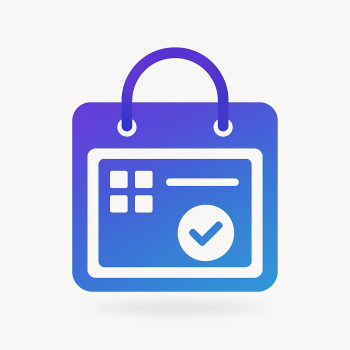How to Create a "One-Page Checkout" Experience in Magento 2

Why a One-Page Checkout in Magento 2?
If you’ve ever watched a user stare at a multi-step checkout, sigh, and then close the tab—you get it. One-page checkout reduces friction, shortens the path to purchase, and is proven to improve conversion. For Magento 2 stores, aiming for a ~20-30% reduction in abandonment is reasonable when you rework checkout flow, optimize UX, and make the page fast and reliable.
Short overview of what we’ll cover
- Quick comparison: ready-made checkout extensions vs. custom development
- High-level architecture and UX goals
- Step-by-step code examples for a simple one-page checkout module
- How to integrate real-time stock visibility (e.g., Force Product Stock Status)
- Compatibility with payment & shipping extensions
- Performance, A/B testing, and metrics to measure conversion impact
Comparing existing one-page checkout solutions vs building custom
Let’s be practical. If you search the Magento ecosystem you’ll find commercial one-page checkout extensions from several vendors. They usually provide:
- Already-styled checkout UI
- Built-in payment/shipping integrations
- Optimized JS bundles and optional analytics
- Support and updates
Pros of ready-made solutions:
- Fast time-to-market — often hours/days to install and configure
- Fewer maintenance headaches at first (vendor handles bugs/updates)
- Tested integrations with many payment gateways
Cons:
- May not match your UX expectations; extensibility can be limited
- Can be heavy if the vendor bundles features you don’t need
- Licensing and upgrade costs
Pros of custom development:
- Complete control over UX, performance, and behaviors
- Tight integration with your specific flows (B2B rules, gift wrap, subscriptions)
- Smaller, more targeted code—less bloat
Cons:
- Higher upfront development time and cost
- Ongoing maintenance responsibility (compatibility with future Magento releases)
My recommendation: if your store has typical requirements and you need a quick conversion win, try a mature vendor extension. If you have specific UX or business rules, build a focused custom one-page checkout module that focuses on speed and simplicity.
Define the UX and business rules before coding
Before touching code, list exactly what your one-page checkout must support:
- Guest checkout and account creation
- Shipping address and methods
- Billing details and payment methods
- Order summary with real-time stock availability
- Promotions, coupons and shipping promotions
- Third-party payment methods (3DS, PayPal, Apple Pay, etc.)
Also set measurable goals: e.g., reduce checkout abandonment by 20-30%, improve time-to-complete checkout to under 90s, or increase conversion rate by X%. Those goals guide UI choices and A/B testing later.
High-level architecture for a Magento 2 one-page checkout
Magento 2’s default checkout is already client-heavy—Knockout.js (uiComponents) + REST endpoints. For a one-page checkout you usually:
- Aggregate all steps into a single layout template (shipping + billing + payment + review)
- Use UI components and/or custom Knockout bindings for reactive updates
- Provide server endpoints to compute shipping rates, totals, and payment tokenization
- Ensure compatibility with observer events and payment method validators
Keep the HTML payload minimal and defer heavy computations to async requests so the page loads fast.
Step-by-step: create a simple one-page checkout module
Below is a compact, practical example to build a starter one-page checkout. It pulls elements of Magento's checkout into a single page and wires them together. This is not a production-ready complete solution, but a clear skeleton you can extend.
1) Module skeleton
Create the module folder app/code/Magefine/OnePageCheckout
app/code/Magefine/OnePageCheckout/
├── etc
│ ├── module.xml
│ └── frontend
│ └── routes.xml
├── registration.php
├── view
│ └── frontend
│ ├── layout
│ │ └── checkout_index_index.xml
│ ├── templates
│ │ └── onepage.phtml
│ └── web
│ ├── js
│ │ └── onepage.js
│ └── css
│ └── onepage.css
└── composer.json
2) registration.php
<?php
use Magento\Framework\Component\ComponentRegistrar;
ComponentRegistrar::register(
ComponentRegistrar::MODULE,
'Magefine_OnePageCheckout',
__DIR__
);
3) module.xml
<?xml version="1.0"?>
<config xmlns:xsi="http://www.w3.org/2001/XMLSchema-instance"
xsi:noNamespaceSchemaLocation="urn:magento:framework:Module/etc/module.xsd">
<module name="Magefine_OnePageCheckout" setup_version="1.0.0"/>
</config>
4) routes.xml (frontend)
<?xml version="1.0"?>
<routes xmlns:xsi="http://www.w3.org/2001/XMLSchema-instance"
xsi:noNamespaceSchemaLocation="urn:magento:framework:App/etc/routes.xsd">
<route id="onepagecheckout" frontName="onepagecheckout"/>
</routes>
5) layout: checkout_index_index.xml
This file tells Magento to render our onepage.phtml in place of the default checkout content.
<?xml version="1.0"?>
<page xmlns:xsi="http://www.w3.org/2001/XMLSchema-instance"
xsi:noNamespaceSchemaLocation="urn:magento:framework:View/Layout/etc/page_configuration.xsd">
<body>
<referenceContainer name="content">
<block class="Magento\Framework\View\Element\Template" name="magefine.onepage" template="Magefine_OnePageCheckout::onepage.phtml"/>
</referenceContainer>
</body>
</page>
6) onepage.phtml
Minimal skeleton that loads checkout UI components you’ll build in JS. Notice we avoid bundling heavy HTML — the JS binds and renders components dynamically.
<div id="magefine-onepage-checkout" data-bind="scope: 'magefineOnepage'">
<!-- ko template: getTemplate() -->
</div>
<script type="text/x-magento-init">
{
"#magefine-onepage-checkout": {
"mageInit": {
"Magefine_OnePageCheckout/js/onepage": {}
}
}
}
</script>
7) requirejs-config (optional) & onepage.js
Onepage JS will create a Knockout component, fetch quote data, and render shipping/payment sections in a single view. You can choose to reuse Magento checkout components (recommended) or create simplified copies.
// view/frontend/web/js/onepage.js
define([
'uiComponent',
'ko',
'jquery',
'mage/url',
'Magento_Checkout/js/model/quote',
'Magento_Checkout/js/model/resource-url-manager'
], function (Component, ko, $, urlBuilder, quote, resourceUrlManager) {
'use strict';
return Component.extend({
initialize: function () {
this._super();
this.quote = quote;
this.isLoading = ko.observable(false);
// Fetch initial quote data and set up observables
this.initData();
return this;
},
initData: function () {
var self = this;
self.isLoading(true);
// f.e. load totals and shipping methods via existing checkout REST
var totalsUrl = urlBuilder.build('rest/V1/carts/mine/totals');
// If not logged in, use guest endpoints accordingly
$.get(totalsUrl).done(function (data) {
self.totals = data;
}).always(function () {
self.isLoading(false);
});
},
placeOrder: function (paymentData) {
// Implementation: send payment info then place order
// Respect payment modules' tokenization and 3DS flows
}
});
});
Notes: The sample uses REST endpoints; in many cases the default checkout client modules already expose this data. Reuse Magento checkout models when possible to support other extensions.
Integrating real-time stock status (Force Product Stock Status)
Showing real-time availability on checkout reduces surprises and cart abandonment. If you’re using a stock status extension like Force Product Stock Status (or a similar module), the goal is to surface the availability per sku in the order summary and react if a product becomes out of stock while the customer checks out.
Two approaches:
- Client-side polling or websockets to show live stock in the order summary.
- Server-side validation during placeOrder to reject/outdate items and inform the customer.
Example: show stock status in the order summary
Assuming the Force Product Stock Status extension exposes an API endpoint or adds a field to the product/quote item, you can fetch it with the quote or a small custom endpoint.
// Example: create a small REST endpoint that returns stock for quote items
// app/code/Magefine/OnePageCheckout/etc/webapi.xml
<route url="/V1/magefine/quote-stock/:cartId" method="GET"
xmlns:xsi="http://www.w3.org/2001/XMLSchema-instance"
xsi:noNamespaceSchemaLocation="urn:magento:module:Magento_Webapi/etc/webapi.xsd">
<service class="Magefine\OnePageCheckout\Api\QuoteStockInterface" method="getStockForQuote"/>
<resource ref="anonymous"/>
</route>
// Service implementation should join quote items with stock data, optionally calling Force Product Stock Status's repository or model.
On the frontend, request that endpoint and show a small badge next to each line item:
// Example KO template snippet
<div data-bind="foreach: cartItems">
<div class="item-row">
<span data-bind="text: name">
<span class="stock-badge" data-bind="text: stock_status">
</div>
</div>
And when the customer clicks Place Order, make a final server-side stock validation and return a clear message if items are no longer available.
UX and UI optimizations to reduce abandonment 20-30%
Here are actionable things that actually move the needle:
- Simplify fields. Only ask for essentials. Use address autocompletion and smart defaults.
- Inline validation. Show errors next to fields immediately, not after submit.
- One-click toggles for shipping=billing to avoid redundant typing.
- Progressive disclosure for advanced options — keep the primary CTA prominent.
- Save forms and let users return (localStorage or customer account autosave).
- Mobile-first layout: larger inputs, stacked layout, big CTA button.
- Show trust signals — accepted payments and guarantees near the CTA.
- Show live shipping estimates early. Unexpected shipping costs are a top abandonment reason.
Small improvements add up. For a 20-30% drop in abandonment, focus on speed, clarity, and removing redundant steps.
Compatibility with payment and shipping extensions
Most problems stem from not respecting payment extensions’ JS and server flows. Here are practical tips:
- Use Magento's payment method JS models where available. Don’t replace their flows; wrap or extend them.
- Respect payment tokenization. Many gateways require you to collect tokens via their JS SDKs and then pass a token to Magento's placeOrder endpoint.
- Testing matrix: for each payment method you support, test on desktop & mobile and cover 3DS flows, saved cards, and errors.
- For shipping modules, fetch available methods after address entry or selection, then show estimated arrival time and cost immediately.
Example: supporting a payment extension
// If extension exposes a JS widget for tokenization, integrate like:
// 1. Render widget in payment area
// 2. On 'place order', call widget.tokenize() -> returns token
// 3. Submit token via Magento payment method payload (paymentData) to the server
// placeOrder pseudo-code
placeOrder: function () {
var self = this;
self.isLoading(true);
paymentWidget.tokenize().then(function(token) {
var payload = {method: 'custom_gateway', additional_data: {token: token}};
// call Magento endpoint to place order using payload
}).catch(function (err) {
// handle tokenization error
}).always(function () { self.isLoading(false); });
}
Key point: never bypass the payment module’s required server-side steps. That keeps you compatible and secure.
Testing, A/B experiments and metrics
To measure the impact of one-page checkout, set up experiments and collect the right metrics. Typical indicators:
- Checkout abandonment rate (sessions reaching checkout but not converting)
- Conversion rate from checkout start to order placed
- Time to complete checkout (median)
- Average order value (AOV)
- Error rates on placeOrder and payment failures
- Load times and TTFB for the checkout page
How to run A/B tests in Magento 2:
- Create variant A (current flow) and variant B (one-page checkout).
- Use a reliable A/B testing tool that can handle server-side experiments or client-side tests with consistent user assignment (Google Optimize, Optimizely, or custom solution).
- Route traffic evenly, ensure enough sample size, and run for at least one business cycle to capture variance.
- Track events: checkout_start, shipping_selected, payment_attempt, payment_success, order_success. Use Google Analytics Enhanced Ecommerce or server-side analytics to get reliable numbers.
Important: do not run tests during large promotions since that skews results.
Performance optimizations
Checkout performance is crucial. A slow checkout kills conversions. Important tips:
- Server: host checkout on fast infrastructure (Magefine hosting can help here). Use PHP-FPM, Redis for sessions and cache, and Varnish for caching non-dynamic assets.
- Minimize JS payloads. Lazy-load vendor SDKs (payment providers) only when needed.
- Use browser caching and set proper caching headers for static assets.
- Use keep-alive and HTTP/2 to reduce connection overhead.
- Reduce round-trips: batch API calls for totals & shipping if possible.
- Measure with RUM (Real User Monitoring) and synthetic tests to get a full picture.
Server-side validation and fail-safes
Always validate server-side. Shopping carts can get out of sync (inventory changes, invalid coupons, expired discounts). Important server-side checks:
- Recalculate totals on order submission
- Validate stock levels and reserve if necessary
- Recheck coupon and tier prices
- Handle payment failures gracefully and present clear next steps to the customer
Example: server-side placeOrder simplified flow
// Pseudo backend flow
1. Accept order payload (quote id, payment token, address ids)
2. Load quote and recalculate totals
3. Check stock for each item; if out of stock, return 409 with details
4. If totals or shipping method changed, return updated totals for the client to confirm
5. Process payment via payment method integration or gateway SDK
6. If payment succeeds, convert quote to order and return success
7. If payment fails, return error and keep the quote intact for retry
Checklist before go-live
- Cross-browser testing and mobile responsiveness
- Payment gateway certification (if required)
- Full regression tests for coupon, gift card, and loyalty flows
- Load testing to ensure the checkout stack handles spikes
- Monitoring and alerts for checkout errors/failed payments
How to measure the ROI of the new checkout
Link your A/B test insights to revenue. The main formula is simple:
Delta Revenue = (Conversion RateB - Conversion RateA) * Sessions * AOV
Example: if you have 100,000 monthly sessions, AOV $80, conversion rate increases from 1.5% to 1.9%:
Delta Revenue = (0.019 - 0.015) * 100,000 * 80 = $32,000/month
Even small percentage improvements can justify the investment.
Common pitfalls and how to avoid them
- Overcomplicating the one-page layout — keep it minimal
- Not testing 3DS and saved card flows — those often fail silently
- Ignoring server-side validation — leads to failed orders after payment
- Loading all payment SDKs at once — slows the page
- Not tracking proper metrics — you won’t know which change moved conversions
Real examples: small focused features that improve conversion
- Autofill address fields with Google Places — reduces typing errors
- Inline error messaging with suggested corrections (postal code mismatch)
- Real-time shipping arrival estimates and free shipping progress bar
- Show saved addresses and autofill for logged-in customers
- One-click create account on order success (post-checkout)
Extending: subscription products, B2B, multi-shipping
If you sell subscriptions or B2B items, the one-page checkout must adapt. For B2B, you might need purchase orders, company approvals, and different shipping flows. The key is modular design — separate concerns so you can add business logic without reworking the whole page.
Wrap-up & practical next steps
If you’re the dev on this, start with a focused MVP: one responsive page, guest checkout, one payment method, and order summary with stock status. Validate the flows, run an A/B test against the legacy multi-step checkout, and iterate.
If you’re a merchant wondering whether to buy or build: evaluate a vendor extension for short-term wins. If your store requires tight UX, custom rules, or you want a lean codebase, plan a custom build.
Need help? Magefine offers extension development and Magento 2 hosting tailored for checkout performance. If you want, ping me the requirements and I can sketch a roadmap with an estimated timeline.
Meta checklist for SEO & performance
- Use semantic HTML and proper headings (H2/H3) — no H1 in the body since the system adds it automatically
- Set metaTitle and metaDescription for the article (see meta fields included with this post)
- Optimize images and lazy-load non-critical assets
- Use structured data for product snippets where relevant
Final note
One-page checkout is a great way to reduce friction and improve conversions—especially when combined with real-time stock feedback, careful payment integration, and iterative A/B testing. Focus on speed, clear user flows, and robust server-side checks. If you follow the steps above you’ll be well on your way to shaving dozens of seconds off checkout and improving your conversion rate significantly.
Good luck — and if you want a quick code review or help wiring payment SDKs into your flow, say the word. I’ll walk you through it like I would with a teammate—step by step.





